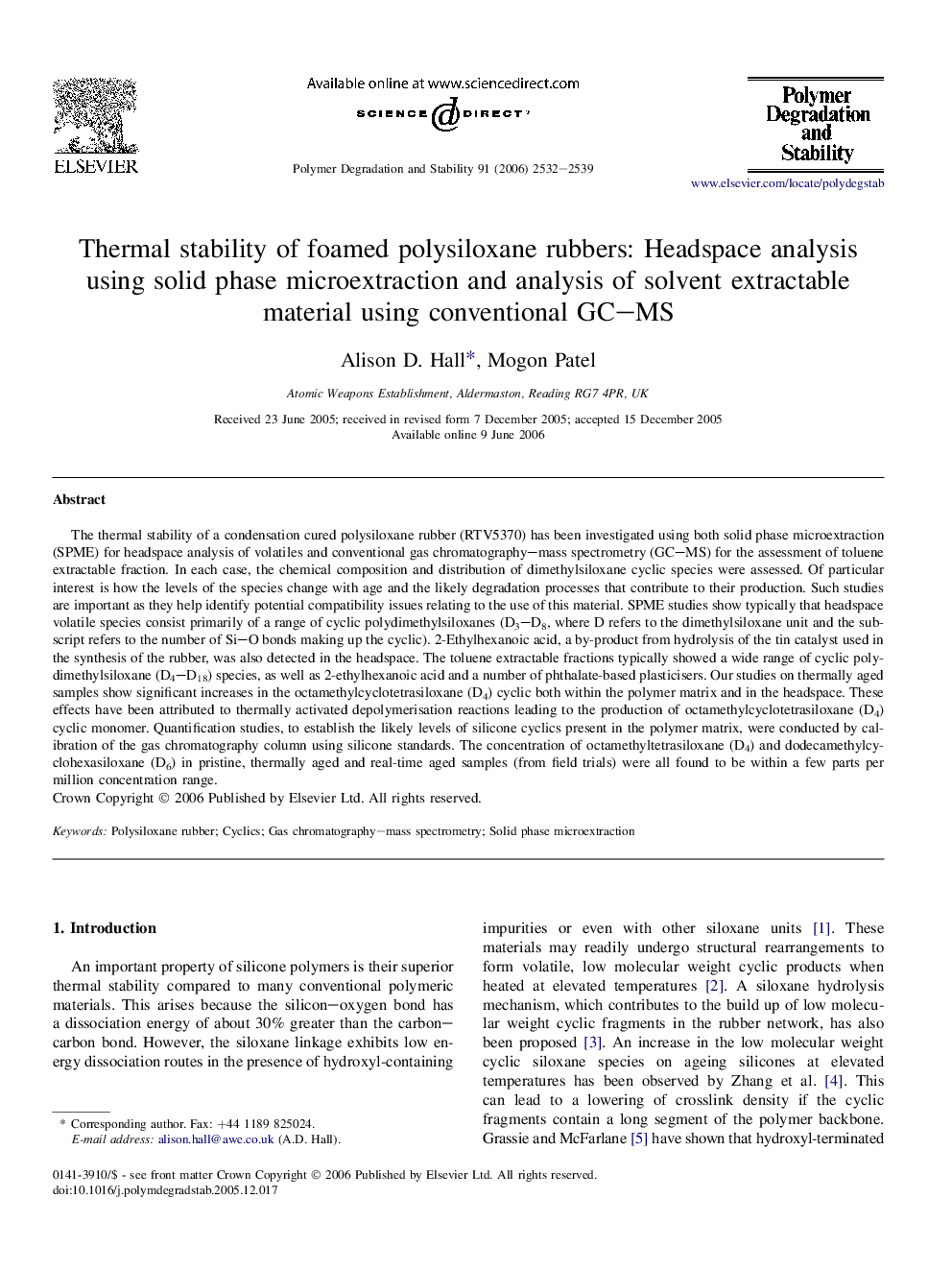| Article ID | Journal | Published Year | Pages | File Type |
|---|---|---|---|---|
| 5205200 | Polymer Degradation and Stability | 2006 | 8 Pages |
The thermal stability of a condensation cured polysiloxane rubber (RTV5370) has been investigated using both solid phase microextraction (SPME) for headspace analysis of volatiles and conventional gas chromatography-mass spectrometry (GC-MS) for the assessment of toluene extractable fraction. In each case, the chemical composition and distribution of dimethylsiloxane cyclic species were assessed. Of particular interest is how the levels of the species change with age and the likely degradation processes that contribute to their production. Such studies are important as they help identify potential compatibility issues relating to the use of this material. SPME studies show typically that headspace volatile species consist primarily of a range of cyclic polydimethylsiloxanes (D3-D8, where D refers to the dimethylsiloxane unit and the subscript refers to the number of Si-O bonds making up the cyclic). 2-Ethylhexanoic acid, a by-product from hydrolysis of the tin catalyst used in the synthesis of the rubber, was also detected in the headspace. The toluene extractable fractions typically showed a wide range of cyclic polydimethylsiloxane (D4-D18) species, as well as 2-ethylhexanoic acid and a number of phthalate-based plasticisers. Our studies on thermally aged samples show significant increases in the octamethylcyclotetrasiloxane (D4) cyclic both within the polymer matrix and in the headspace. These effects have been attributed to thermally activated depolymerisation reactions leading to the production of octamethylcyclotetrasiloxane (D4) cyclic monomer. Quantification studies, to establish the likely levels of silicone cyclics present in the polymer matrix, were conducted by calibration of the gas chromatography column using silicone standards. The concentration of octamethyltetrasiloxane (D4) and dodecamethylcyclohexasiloxane (D6) in pristine, thermally aged and real-time aged samples (from field trials) were all found to be within a few parts per million concentration range.
